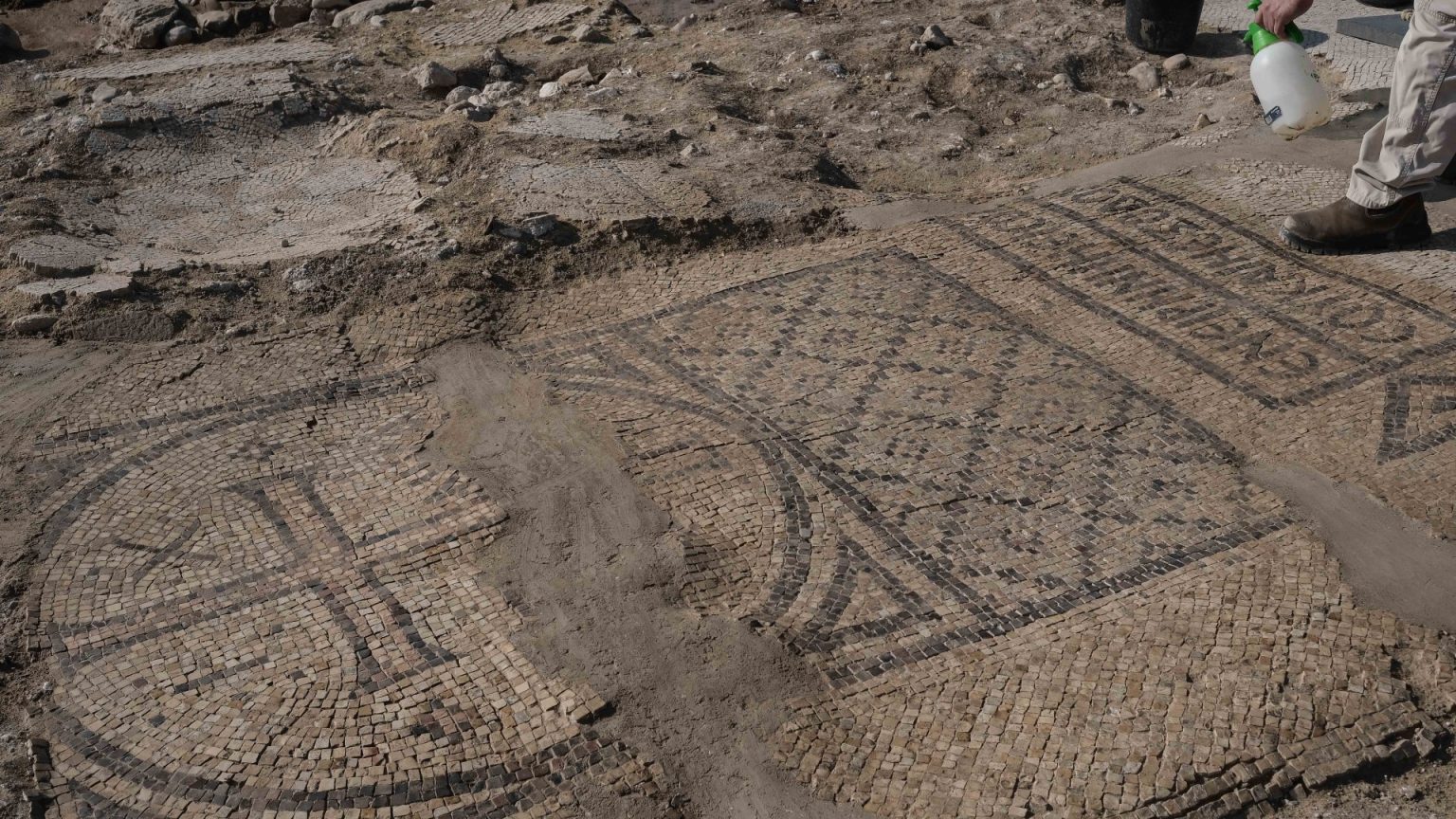A remarkable 1,500-year-old mosaic floor, bearing a biblical inscription, has been unearthed at a Byzantine-era site in southern Israel near Kiryat Gat, a city steeped in biblical history. This archaeological breakthrough unveils a significant piece of the region’s past, showcasing the artistry and religious fervor of the time. The mosaic, the centerpiece of the discovery, is adorned with intricate depictions of crosses, lions, doves, an amphora, floral patterns, and geometric designs. At its center, a biblical inscription in ancient Greek reads: “Blessed are you when you come in and blessed are you when you go out” (Deuteronomy 28:6), adding a layer of spiritual significance to the artwork. Experts hail it as one of the most unique mosaics ever found in Israel, highlighting the richness of the area’s history and its importance as a hub of activity during antiquity.
The excavation, overseen by the Israel Antiquities Authority, has brought to light not just the stunning mosaic but also the remains of at least ten buildings, including a monastery and a sophisticated winepress. The monastery, a testament to the religious life of the period, is believed to have been operational for approximately 600 years, marking the site as a long-standing center of activity. The winepress, adjacent to the monastery, is another indicator of the site’s robust economic and social life. It demonstrates signs of multiple repairs and renovations, suggesting its sustained use over time. The flooring of the press boasts a distinctive blue and white stone mosaic, remnants of red paint still clinging to the plastered walls. Greek letters, likely serving as construction markers, are visible on some of the northern collecting vat floor slabs.
The discovery provides a glimpse into the diverse activities that took place at the site. Beyond religious and agricultural pursuits, the presence of ceramic factory waste suggests that the settlement was also a center for pottery production. This evidence paints a picture of a vibrant community engaged in a range of economic and spiritual practices. The site’s location on a major road connecting the mountain region to the coastal plain further underscores its importance as a hub for travelers and smaller surrounding settlements.
Kiryat Gat, the modern city near the excavation site, holds a prominent place in biblical narratives. In ancient times, it was one of the five principal Philistine cities, and it is mentioned as one of the last refuges of the Anakim, often interpreted as giants, before the Israelite conquest under Joshua. The city’s history is intertwined with biblical figures like Samuel and King David, who either subdued or interacted with it. The first book of Kings recounts that during King Solomon’s reign, Gath remained under the rule of a Philistine king, Achish. Even its Hebrew name, Kiryat Gat, meaning “the place of the winepress,” connects with the recent discovery of the ancient winepress on the site. This interconnectedness between the biblical narrative and the archaeological findings further enriches the significance of the discovery.
The Israel Antiquities Authority, acknowledging the importance of preserving the past for future generations, sees the discovery as a symbolic link between history and the ongoing development of the region. It invests substantial resources in salvage excavations across the country to unearth and document the historical and archaeological treasures that lie beneath the expanding urban landscape. This commitment to preserving the nation’s heritage ensures that these discoveries contribute to the understanding and appreciation of Israel’s rich past.
The remarkable mosaic floor will be relocated to a public space within Kiryat Gat, allowing the public to admire its beauty and historical significance. This decision ensures that the artifact, a testament to a vibrant past, becomes an integral part of the city’s present and future identity, offering a tangible connection to the region’s rich heritage. This careful preservation and public accessibility will provide an opportunity for present and future generations to connect with the artistic, religious, and historical context of the region, fostering a greater understanding of the civilizations that shaped the area.











